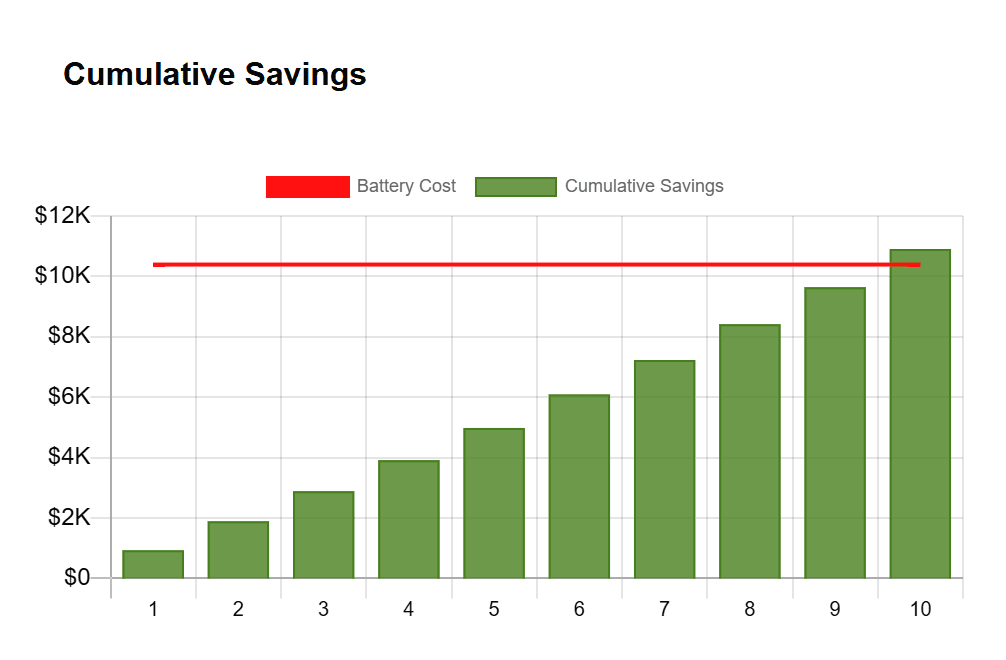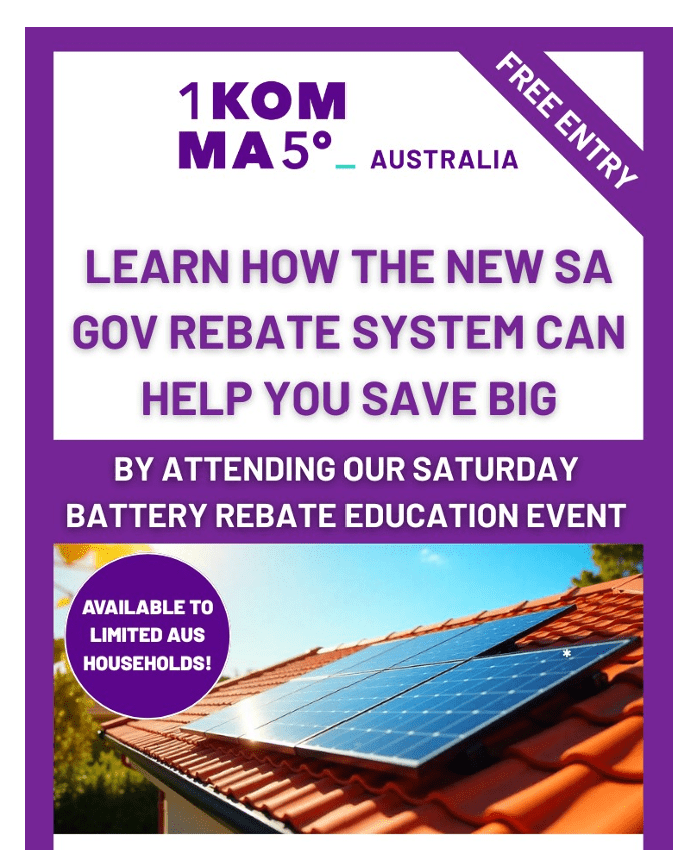

Federal Attorney-General Mark Dreyfus spruiks Labor’s Cheaper Home Batteries Program.
Labor’s election promise of a federal battery incentive is eye-catching enough on its own, but especially lucrative is how it can potentially be combined with state-level schemes. We’ve run the numbers to calculate the savings from double-dipping, and they’re big — but so are the potential issues.
Labor’s proposed $2.3bn Cheaper Home Batteries Program offers an incentive for Australians that offers roughly $372 per kilowatt-hour of useable capacity, minus fees (we have more detail on the policy here).
But how much does this actually shave off the cost of a home battery, and what about when combined with a state-level scheme?
Savings From Federal Labor’s Proposed Battery Incentive
The Cheaper Home Batteries Program would be delivered under the longstanding federal incentive scheme for solar, via Small-scale Technology Certificates (STCs).
SolarQuotes resident fact-checker Ronald Brakels has scrutinised the available information on Labor’s promised scheme. Even when assessing a relatively expensive battery in the 13.5 kWh Tesla Powerwall 2 as a case study, the price does become much more accessible.
Ronald estimates that the proposed federal incentive could shave between $4,000 and $4,500 off the cost of a Tesla Powerwall 2, based on an initial purchase price of $15,500 (although note that this does not factor in potential price changes from fluctuating tariff levels):
“With an STC price of $40, the maximum reduction from Labor’s National Battery Incentive for a Powerwall 2 will be $5,000. If, after administration and compliance costs, the price reduction is $36 per STC — the same as commonly received for rooftop solar — then the price reduction would be $4,500. But compliance costs for batteries could easily be higher and there are also start up costs involved in getting used to a new incentive. If it’s assumed the price reduction per STC will be $32 as a result of this, then the incentive would reduce a Powerwall 2 price by $4,000.”
Combining Federal and State Battery Incentives
Labor has pledged that its scheme will be stackable on top of existing battery state subsidies. One of the most notable is the NSW Battery Incentive, which is based off the fluctuating price of PDRS certificates (PRCs), which Ronald has factored into his NSW-based case study:
“RC prices vary. At the moment households may receive $1.70 each. At that price the NSW battery incentive will lower the cost of a Powerwall 2 by $1,830. The number of PRCs received can slightly vary between locations, so the figure may be a little different in Paramatta than the Eastern suburbs 2000 postcode I used. With a $1.70 PRC price NSW incentive of $1,830 and if the national incentive is $4,000, these combined will bring the total reduction in price to $5,108.
If the installed cost of a Powerwall 2 would be $15,500 without incentives, then after the NSW and proposed national incentive are applied, it will lower the cost to the homeowner to $10,392. That’s 33%, or one-third off the cost of the battery. These figures however don’t include the price increase that usually results when a subsidy is introduced, or the extra discounts you could secure from joining a VPP.”
What Does Labor’s Incentive Do To Battery Payback Time?

The potential payback time of a Tesla Powerwall 2 should Labor’s incentive scheme be introduced.
By inserting a sample of power use data in SolarQuotes Battery Calculator on a Diamond Energy time-of-use plan, and manually applying a 33% discount to the Powerwall 2 to cut the cost to $10,392 to reflect both NSW and federal incentives, the payback time goes down from 13 years to 10 years.
The discount would be much steeper for more mid-range batteries, approaching 50% for a range of reputable brands.
To see what the federal incentive scheme alone would do to the price of your preferred battery wherever you live in Australia, insert your details into our battery calculator, but just reduce the cost by 25% in the field for the cost of the battery price, for a rough conservative estimate of how much it would reduce payback time.
Be mindful that the Labor program is just an election promise and will mean nothing if they don’t secure victory.
What Problems Could Double-Dipping Create?
Going for a bottom-of-the-line cheap battery could eliminate most of the cost, which is likely to attract dodgy operators seeking to make a quick buck who offer up “free” batteries without the technical proficiency to do installs properly. Regulators will need to be conscious of the potential dangers here while finalising the rules should Labor win the election and make this incentive a reality.
The proposal does specify that batteries must be Clean Energy Council (CEC) approved, which offers a theoretical safeguard in terms of battery performance, but not against unscrupulous operators.
There’s already suspect promotions proliferating even in states without their own subsidy, such as South Australia, where one company is spruiking an information day falsely suggesting that the incentive is a “SA Government” offer and giving the wrong idea that the grant is actually available, rather than just an election promise.

Not advisable to attend this “information day”, given how much misinformation is in the advertisement alone.
Will Double-Dipping Battery Schemes Actually Be Allowed?
Although federal Labor has pledged its scheme can be stacked with state schemes, the rules of NSW’s scheme need to be amended to realise this. It has been flagged under the PDRS Amendment No.3 Section 5.4 “that an activity is not a recognised peak activity” (e) “if it is eligible to create tradeable certificates under the Renewable Energy (Electricity) Act 2000.”
So this means the schemes aren’t stackable as it stands now.
On Wednesday, SolarQuotes in-house installer Anthony Bennett spoke with officials within the NSW Government, and reports that they’re acutely aware that quality must be policed. Regulators are working on changes to address this issue.
Anthony notes that there are a host of other issues with the NSW scheme that fellow solar industry figures would like to see improved:
“Most importantly, major gains would be made if NSW simply had a price cap instead of a capacity limit, whether the federal proposal comes to pass or not. Right now, the NSW rules mean a battery bigger than 28kWh will get zero incentive. This becomes an artificial ceiling, especially when the feds subsidise 50kWh and don’t cap it until you hit 100kWh … 100kWh stops the bigger commercial setups being subsidised, but a decent small business will still get a good bang for buck.
As for the federal program, it’s been welcomed. However despite already being very highly regulated, many installers are calling for compulsory inspections before funds are paid. We don’t want a pile of cheap batteries covered in subsidy-seeking blowflies.”
What State Battery Schemes Exist?
A host of State and Territory governments offer support for battery purchases:
For more detail on battery rebates, take a look at our comprehensive guide on federal, state and territory offers, or go deeper with our dedicated pages on the NSW scheme, WA incentive and Labor’s proposed federal program.







